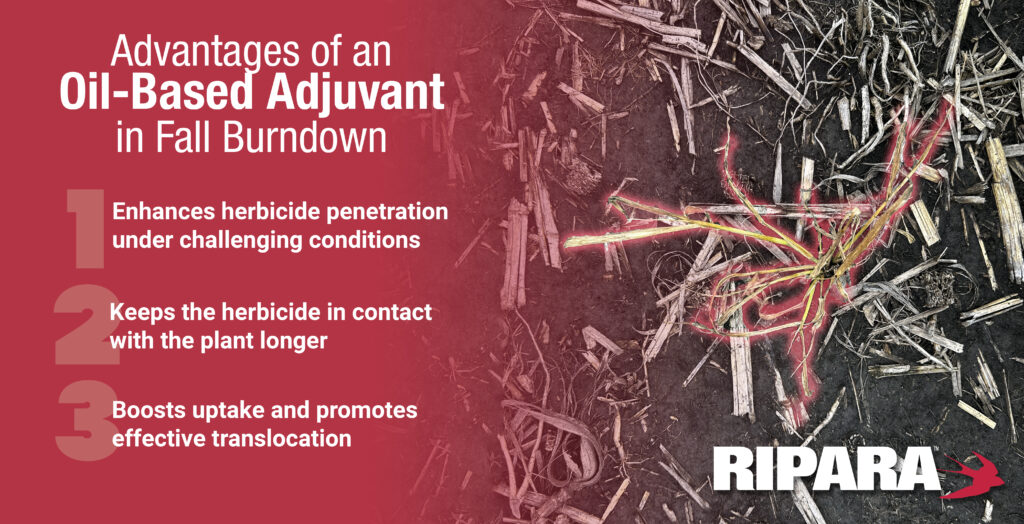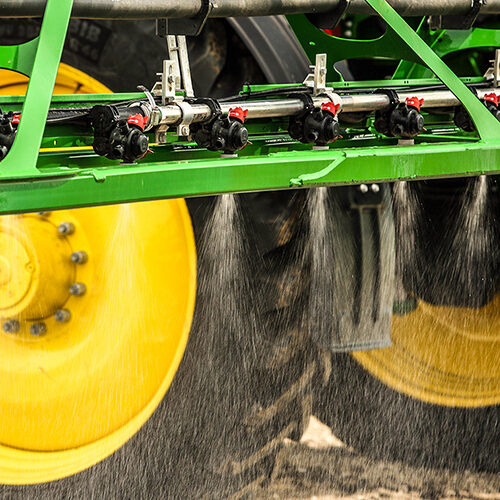November 5, 2025
3 Advantages to Using an Oil-Based Adjuvant in Fall Burndown Application
Share on:
[Nov 2025] While harvest may be winding down, it is never too early to start thinking about next season. Preparing your fields for spring starts now with your crop residue and weed management practices this fall. A post-harvest burndown application can make a big difference by eliminating winter annual and perennial weed pressure, which ultimately may reduce input costs and field preparation in the spring. When preparing for a fall application, be weary of cooler fall temperatures hindering efficacy when using a herbicide by itself. With weeds starting to enter dormancy for the winter months, it becomes more challenging to ensure herbicide uptake and an effective kill of the plant. Adding an oil-based adjuvant to the tank enhances the efficacy of your herbicide and can make a substantial impact come springtime. Here are 3 advantages to using an oil-based adjuvant in your fall burndown application:
- Improves herbicide contact with plants by evenly distributing spray droplets across the leaf surface and dissolving thick cuticle barriers.
- Enhances uptake through better leaf contact leading to more herbicide penetrating the plant. This is especially important for common systemic herbicides typically used in the fall, such as glyphosate, 2,4-D, or dicamba.
- Promotes translocation into perennial roots and winter annual crowns before dormancy, which increases the overall effectiveness of the herbicide and leads to less weed pressure in the springtime.
How oil-based adjuvants work
An oil-based adjuvant helps dissolve the waxy cuticle of the plant leaves, increasing penetration and maximizing herbicide contact with the plant. This is especially important in the fall as temperatures cool and weed growth slows. It is crucial to get the herbicide in the plant quicker to allow it to effectively kill the weed.

There are a lot of oil-based adjuvants on the market, but they are not all created equal. Some other things to consider when selecting your adjuvant are drift reduction, oil to surfactant ratio, and CPDA certification. An adjuvant that combines a drift reduction agent and crop oil reduces input costs and the number of things to add to your tank. Using an oil-based adjuvant with a high surfactant concentration increases penetration and is effective at a lower use rate than ordinary oil-based adjuvants. Lastly, check to see if your adjuvant is CPDA certified, verifying its quality and sustainability. Precision Laboratories offers a variety of high-quality oil-based adjuvants such as Ripara™ and Salia™. Using trusted adjuvants like Ripara or Salia saves time, money, and energy in the field.
Talk to your agronomist or a Precision Laboratories representative about adding an oil-based adjuvant in your tank this fall and be a step ahead next spring.



